Instruments used in gemology Part IV- Dr Shihaan's Guide
Open FREE Unlimited Store Join Our Newsletter
Click here to go to Part III
12) Electronic Diamond Tester
There are many different types of electronic diamond testers in the market. Electronic diamond testers are portable and battery powered
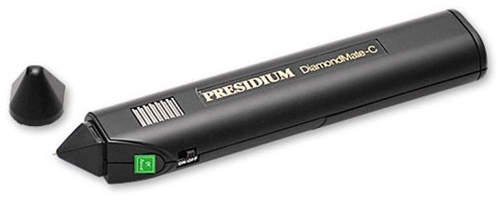
Presidium Electronic Diamond Tester
All electronic diamond testers test the ability of the stone to conduct heat. That is they test the thermal conductivity. Diamonds conduct heat more rapidly than its simulants.
The thermal conductivity of diamond varies from 1000 W/m/°C for Type I diamond to 2600 W/m/°C for Type IIa diamond. Synthetic cubic zironia has a very low thermal conductivity of 10 W/m/°C. Corundum has a low thermal conductivity of 40 W/m/°C (Watts/metre/degree Celsius).

Presidium Electronic Diamond Tester and kit. It comes with rechargable batteries and adaptor.
It is important to note that an electronic diamond tester cannot differentiate between natural diamonds and artificially created (lab created) diamonds. However it can differentiate diamonds from other colourless gemstones and simulants such as glass, glass pastes, white sapphire, white zircon, white quartz (rock crystal), white topaz and cubic zirconia.
Synthetic moissanite a recent diamond simulant cannot be detected by a thermal tester as it has a conductivity similar to diamond. Moissanite tester was developed and marketed by C3 Inc. This tester can identify diamond from synthetic moissanite. This is carried out after the probe gives a positive thermal test for diamond. This tester works on the principal of relative transparency in the near-ultraviolet, where diamond transmits while synthetic moissanite absorbs. This is indicated on the instrument. N.B: Heavily included diamonds may give a false response because they cannot transmit.
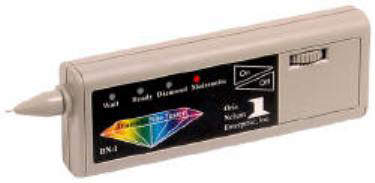
Diamond Nite, all in one diamond and moissanite tester.
13) Dark Feild Loupe
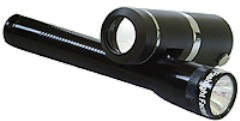
10X Dark Feild Loupe
This small portable instrument applies the same principal as the dark feild illumination in a microscope. Light is reflected from the side before reaching the gemstone. It is the best method of illuminating the interior of a gemstone. The inclusions in a gemstone will stand out bright against a black background.
Most dark feild loupes offer a magnification of 10X but 20X is also available in the commercial market.
14) Gemstone Gauge
Gemstone gauges are used to measure the size of a gemtone. It can measure the various measurements and dimentions of a gemtone. Gemstone gauges are also very useful in the lapidary and diamond cutting industry as it can be used to measure the size of facets.
There are many different types of gemstone gauges in the market eg. sliding gauge, caliper gauge and presidium gauge.
Gemstone gauges specially designed and manufactured for the gem and jewellery industry are available in the market.

Mechanical Dial Gauge
A mechanical dial gauge has an accuracy of 0.01mm. Different versions are available in the commercial market. Cheaper versions come in plastic finish.
Most gemstone gauges are portable instruments. Modern gemstone gauges are digital gauges usually with an accuracy of 0.01mm

A Dial Gauge with an accuracy of 0.1mm. It comes inmaximum size of 10mm and 20mm.

Kruess Digital Gemstone Gauge. This is a modern gemstone gauge.
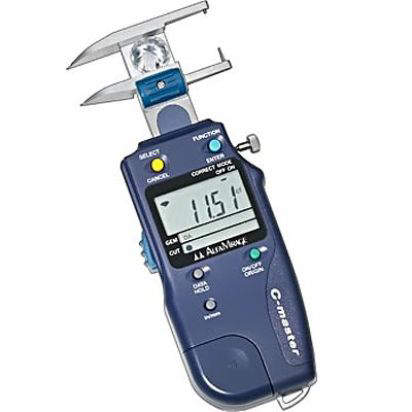
C- Master Digital Gemstone Gauge. This is a modern gemstone gauge.
The most basic type of gemstone gauge is made up of plastic or metal sheets with holes of predetermined sizes cut on it. A presidium gauge is the most elaborate gemstone gauge and it is provided with a table of dimensions in relation to the weight of the stone. Therefore a presidium gauge is also very useful while mounting gemstones on jewellery.
15) Day Light Lamp
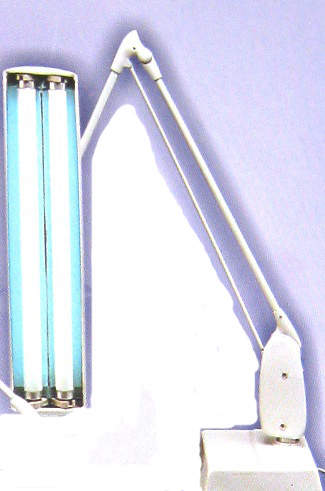
A Day Light Fluorescent Lamp
It is almost impossible to get proper day light (sunlight) into an office or factory.
Day light illumination is required for many procedures in the gem and jewellery trade such as for sorting large lots of diamonds, precious and semi preious stones, during faceting and during setting of stones. In short day light illumination is so important that a jewelers bench is not complete without it.
Light produced by these specially designed fluorescent lamps is almost near that of natural daylight.
Modern day lights comes in two models, the 'stable bass type' and the 'mounted type' with maintenance free chokes and low power consumption.
Click here to go to Part III
You are welcome to discuss this post/related topics with Dr Shihaan and other experts from around the world in our FORUMS (forums.internetstones.com)
Back to Dr Shihaan's Guide to Buying Diamonds and Jewelry
Our Twitter Updates
Powered by Ultra Secure
Amazon (USA) Cloud Network

Founder Internet Stones.COM
Register in our Forums
| Featured In
|
|
|
|
|
|
|
|


















